Gabion Wall: 10+ Designs, Construction, Costs, Maintenance, and Benefits
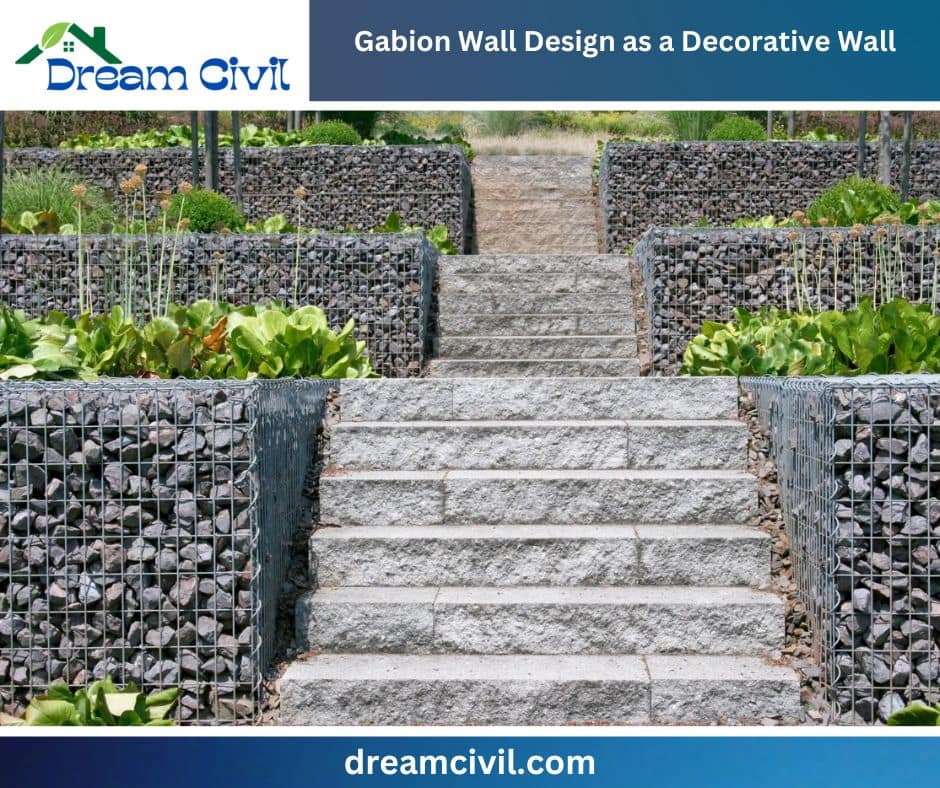
This post was originally published on this site
Table of Contents
✔ A gabion wall is a retaining wall and a decorative structure made from wire mesh containers, known as gabion baskets or boxes, filled with rocks or other materials.
✔ Gabion walls suit both practical and aesthetic purposes. The stones create a sturdy and versatile fence for landscaping, erosion control, slope stabilization, and architectural features. Gabion walls are constructed on-site and can be shaped and sized to fit specific needs.
A. Gabion Wall Construction
1. Materials needed
2. Step-by-step installation process
| Step | Task | Description |
| 1 | Site Assessment | ✔ Site Assessment: Evaluate suitability and purpose.
✔ Permits and Regulations: Check local codes and permits. ✔ Marking: Use stakes and strings for layout precision. |
| 2 | Excavation | ✔ Excavation: Dig trench per layout, depth per wall height.
✔ Foundation: Compact trench soil or add backfill material. |
| 3 | Geotextile Fabric Installation | ✔ Geotextile Fabric: Line baskets, overlap, and secure. |
| 4 | Gabion Basket Assembly | ✔ Gabion Basket Placement: Stack, align, and level baskets.
✔ Wiring Baskets Together: Secure adjacent baskets with wire. |
| 5 | Stone Fill | ✔ Stone Selection: Choose suitable, clean stones or rocks.
✔ Filling Baskets: Start at the bottom and use various sizes. ✔ Compaction: Compact each layer with a tamping tool. |
| 6 | Stakes or Anchors | ✔ Staking or Anchoring: Install stakes or anchors regularly. |
| 7 | Additional Rows and Tiers | ✔ Repeat Steps: Continue stacking baskets and wiring them.
✔ Tiered Walls: Use engineering practices for tiered designs. |
| 8 | Final Adjustments | ✔ Finishing Touches: Ensure the wall is level and stable. |
| 9 | Backfill and Landscaping | ✔ Add soil, Gravel, or suitable materials as needed. |
| 10. | Maintenance | ✔ Regularly inspect and replace damaged components. |
B. Gabion Wall Design as a Decorative Wall
Adding gabion walls as a decorative element can enhance the aesthetic appeal of both indoor and outdoor spaces. Here are some creative ideas and considerations for incorporating gabion walls into your decor:
1. Indoor Accent Walls: Assess using them as indoor accent walls to assert in your living room, bedroom, or bathroom.
2. Fireplace Surrounds: Alternatively, add a co-occurring touch to your fireplace by bounding it with a gabion wall that complements the warm ambiance.
3. Room Dividers: In an open floor plan, design stylish partitions that allow light to pass through while specifying separate spaces with gabion walls as room dividers.
4. Shelving Units: Thread gabion structures in kitchens, libraries, or home offices as unique shelving units. These open shelves nourish functional storage and display opportunities.
5. Staircase Balustrades: You can also comprise gabion structures as unique shelving units in your kitchen, library, or home office.
6. Outdoor Privacy Screens: Substitute traditional balustrades with gabion walls as staircase balustrades for an industrial and organic touch to your home’s architecture.
7. Garden Sculptures: Assemble decorative privacy screens on your patio, deck, or balcony that harmonize seamlessly with outdoor environments.
8. Water Features: Tone gabion structures into garnishing garden sculptures or facilities that range from abstract designs to expressions of animals or geometric patterns.
9. Lighting Integration: Use gabion walls as a backdrop for cascading fountains or ponds to assemble a serene atmosphere. Merge lighting fixtures to cast compelling patterns and shadows on the textured stones.
10. Custom Artwork: You can even arrange stones in specific patterns or images to create custom artwork or mosaics within the gabion wall.
11. Focal Point in Gardens: Strategically inaugurate decorative gabion walls to serve as focal points for plants, sculptures, or other garden ornaments.
12. Corporate and Commercial Spaces: Interweave or commercial settings, use gabion walls in blowout areas, lobbies, or exterior facades to convey a typical and memorable image.
13. Lighting Effects: Investigation with different lighting effects to sweeten the gabion wall’s visual impact, from soft, warm lighting to dynamic LED lighting.
C. Gabion Wall Design as an Erosion Controller Wall
Creating gabion walls is an eco-friendly way to prevent soil erosion while maintaining an attractive landscape. To design gabion erosion control walls, consider the following ideas:
1. Slope Stabilization: Gabion walls can stabilize pitches prone to erosion. Terracing the area with tiered gabion walls can delay water runoff and control soil erosion.
2. Natural Stone Blend: Select a collection of natural stones and rocks with diverse sizes and colors to assemble a visually adorable, textured deception for the gabion erosion control wall.
3. Vegetation Integration: Plant erosion-resistant vegetation within the gabion baskets. Native grasses, shrubs, or ground shelters can assist in anchoring the soil and sweetening the wall’s ecological function.
4. Gabion Check Dams: Assemble gabion check dams along water channels or gullies to slow water flow, lessen sediment runoff, and mitigate erosion.
5. Gabion Weirs: Install gabion weirs across small rivulets or drainage gutters to delay water velocity, trap sediment, and provoke water infiltration.
6. Gabion Mattresses: Lay Gabion beds on barricades or abrupt slopes. These flat gabion structures control soil displacement and deliver stability, allowing vegetation to grow.
7. Gabion Retaining Berms: Design gabion retaining berms along riverbanks or shorelines to defend against erosion generated by water currents or wave action.
8. Gabion Wing Walls: Construct gabion wing walls on the sides of trenches or bridges to channel water discharge and avert soil erosion around infrastructure.
9. Gabion Revetments: Build gabion revetments along coastal areas to grip wave energy, diminish shoreline erosion, and assemble habitats for marine life.
10. Gabion Articulation Mats: Converge gabion walls with enunciation mats, erosion control blankets, or geotextile fabric to sweeten their significance in reducing soil erosion.
11. Slope Greening: Heighten vegetation growth on the gabion erosion power wall by planting native species or hydroseeding the surface with erosion control mixtures.
12. Permeable Facade: Opt for gabion walls with a penetrable deception to qualify Water to pass through while retaining soil. This feature can sweeten drainage and diminish surface runoff.
13. Geogrid Reinforcement: To sweeten stability, merge geogrid or geotextile reinforcement layers within the wall structure.
14. Natural Stone Features: Use gabion erosion control walls as natural stone features within your landscape. Intersperse seating areas, pathways, or viewing points to make them functional and visually appealing.
15. Professional Consultation: Aspire advice from erosion control experts or engineers to ensure that your gabion wall design effectively addresses erosion challenges in your landscape.
16. Regular Maintenance: Inaugurate a maintenance plan to monitor and maintain the gabion erosion control wall, including clearing debris, inspecting for damage, and reinforcing as needed.
D. Gabion Wall vs. Concrete Wall vs. Timber Retaining Wall
| Aspect | Gabion Wall | Concrete Wall | Timber Retaining Wall |
| Cost | ✔ Typically, lower construction costs | ✔ Generally, higher initial and maintenance costs | ✔ Competitive initial prices but higher maintenance |
| Installation | ✔ Easier and quicker to construct | ✔ More complex and time-consuming installation | ✔ More straightforward installation, especially for DIY projects |
| Aesthetics | ✔ The natural appearance blends with the surroundings | ✔ The industrial look may require additional finishes | ✔ The natural look may require periodic staining/painting |
| Environmental Impact | ✔ Eco-friendly, allows water flow and promotes vegetation | ✔ Non-porous can increase runoff and erosion | ✔ Sustainably sourced timber can be eco-friendly |
| Flexibility | ✔ Adaptable to ground movement, less prone to cracking | ✔ It is apt to break and may require repairs | ✔ Prone to warping, rotting, and termite damage |
| Durability | ✔ Resistant to freeze-thaw cycles and weathering | ✔ Vulnerable to weather damage and erosion | ✔ Susceptible to decay and insect infestations |
| Maintenance | ✔ Minimal maintenance required | ✔ It may need regular repairs and sealing | ✔ Routine maintenance, staining, and possible repairs |
| Height Limitations | ✔ Suitable for low to medium-height walls | ✔ Ideal for taller and heavy-duty walls | ✔ Suitable for medium-height retaining walls |
| Noise Reduction | ✔ It provides limited noise reduction | ✔ It may offer better sound insulation | ✔ Limited sound insulation benefits |
| Environmental Regulations | ✔ Often easier to comply with regulations | ✔ May require permits for ecological impact | ✔ May require permits for environmental impact |
| Retaining Capability | ✔ Effective for stabilizing slopes and erosion control | ✔ Strong retaining capability for vertical walls | ✔ Suitable for medium-height retaining walls |
| Sustainability | ✔ Sustainable construction option | ✔ Limited sustainability due to high carbon footprint | ✔ Endurable with proper timber sourcing and treatment |
E. Gabion Wall Cost
✔ Gabion wall installation costs $30 to $70 per square foot, depending on wall size, stone type, and labor.
1. Factors influencing cost:
| Factor | Description |
| Wall size | ✔ More enormous gabion walls are more expensive than smaller walls. |
| Stone type | ✔ Stone or rock fill cost varies primarily based on availability and type. |
| Site preparation | ✔ Site conditions can impact costs, especially with extensive excavation or land preparation. |
| Labor costs |
✔ Solar panel installation labor costs vary by location and can significantly impact total costs, especially for complex designs or difficult-to-access sites. |
| Design complexity |
✔ Elaborate wall designs with curves, terraces, or multiple tiers can add to the construction cost. |
| Permits and regulations | ✔ Permit fees and compliance with local building codes and regulations can add to the cost of solar panel installation. |
2. Cost comparison with alternative materials
| Retaining Wall Type | Cost Comparison with Gabion Walls |
| Concrete or Masonry Walls |
✔ More minor to medium-sized projects can be more expensive per square foot due to higher labor and material costs. |
| Wooden Retaining Walls |
✔ Shorter-lifespan, higher-maintenance solar panels can be cost-competitive but may not be the best value in the long run. |
| Rock or Stone Masonry |
✔ Stone masonry is more expensive due to the labor-intensive nature of the work. |
3. Tips for cost-effective installation
| Tip | Description |
| Choose local stones |
✔ Locally sourced stones are typically more affordable than imported or specialty stones due to reduced transportation costs and import duties. |
| DIY vs. professional installation | ✔ Consider your skills and project size: DIY can save on labor costs for smaller walls, but more enormous or complex walls may benefit from professional installation. |
| Site assessment | ✔ A thorough site assessment can help minimize excavation and land preparation costs. |
| Design simplicity | ✔ Simple wall designs can save on labor and material costs. |
| Stone selection | ✔ Choose readily available stone sizes that require minimal sorting or cutting to save time and money. |
| Compare quotes | ✔ Get multiple quotes from contractors to ensure you’re getting a fair deal. |
| Maintenance | ✔ Regular maintenance can help your gabion wall last longer, saving you money on replacement costs in the long run. |
F. Gabion Wall Maintenance
| Task | Frequency | Description |
| Inspect regularly | ✔ Inspect the gabion wall annually, more often after heavy rains or weather events. | ✔ Inspect the gabion wall for damage, loose stones, or bulging. |
| Repair damage | ✔ Promptly | ✔ Repair gabion wall stones, wires, and geotextile fabric. |
| Weed control | ✔ As needed | ✔ Remove any vegetation or weeds growing on or through the gabion wall. |
| Remove debris | ✔ As needed | ✔ Keep the gabion wall free of debris. |
| Maintain drainage | ✔ As needed | ✔ Keep gabion wall drainage functional. |
| Inspect wire mesh | ✔ Annually | ✔ Inspect gabion wall wire mesh for rust or corrosion. |
| Clean geotextile fabric | ✔ Annually | Inspect and repair gabion wall geotextile fabric. |
| Replenish Stone fill | ✔ As needed | ✔ Add stone fill to the gabion wall as required. |
| Prevent soil accumulation | ✔ As needed | ✔ Keep the gabion wall free of soil and debris. |
| Control vegetation | ✔ As needed | ✔ Manage plant growth near the gabion wall to prevent root infiltration. |
| Monitor anchor stability | ✔ As needed | ✔ Inspect and resecure gabion wall stakes or anchors as required. |
| Professional assessment | ✔ As needed | ✔ Have large or critical gabion walls professionally assessed periodically. |
G. Gabion Wall Drainage
✔ Gabion walls have superior drainage properties, making them persuasive for water management. Here, it discusses how they handle Water, tips for preventing water-related issues, and best practices for drainage design.
| Gabion Wall Drainage |
| Permeable Structure |
✔ Gabion walls are porous structures that allow Water to pass through, preventing water accumulation behind the wall. |
| Natural Drainage | ✔ Water flows through gabion walls naturally, preventing hydrostatic pressure buildup and ensuring proper drainage. |
| Preventing Water-Related Issues |
| Proper Backfill | ✔ Use free-draining materials like Gravel or crushed Stone for backfill to prevent water buildup and promote natural drainage. |
| Clear Drainage Path | ✔ Gabion walls need regular inspection and debris removal to prevent water flow obstruction, especially in high-rainfall areas. |
| Weep Holes | ✔ Weep holes or drainage pipes at the base of the wall can help drain water away from the foundation. |
| Site Grading | ✔ Proper grading around the gabion wall prevents Water pooling at the base. |
| Best Practices for Drainage Design |
| Geotextile Fabric | ✔ Geotextile fabric in gabion baskets prevents erosion, separates stone fill, and allows water drainage. |
| Drainage Channels | ✔ Internal drainage channels or gaps between baskets promote water flow and avoid accumulation. |
| Slope Stabilization | ✔ Erosion control measures like drainage blankets or vegetation help stabilize slopes and manage water runoff. |
| Regular Inspection | ✔ Regular inspections help identify and fix water problems quickly. |
| Professional Consultation | ✔ Experienced engineers and contractors can help design and install effective drainage solutions for complex projects. |
H. Gabion Wall Case Studies
Here are some real-life gabion wall projects, including their success stories and lessons learned:
| Project | Location | Gabion Wall Purpose | Success | Lessons Learned |
| Coastal Erosion Control | ✔ Coastal town prone to erosion | ✔ To protect coastal properties from erosion | ✔ The Gabion wall successfully reduced erosion, safeguarding properties and infrastructure. | ✔ Proper site assessment and geotextile fabric use were critical. Regular monitoring is essential to address shifting beach conditions. |
| Retaining Wall in Hilly Terrain | ✔ Hillside property with steep slopes | ✔ To create terraced gardens and stabilize the hillside | ✔ The gabion walls provided effective terracing, preventing soil erosion and enhancing landscaping. | ✔ Proper wall design with tiered baskets and drainage channels ensured stability. |
| Urban Noise Barrier | ✔ Urban areas with noise pollution | ✔ To construct a noise barrier along a highway | ✔ The Gabion wall reduced noise pollution, enhancing the quality of life for residents. | ✔ Proper stone selection and compaction contributed to the wall’s soundproofing effectiveness. |
| Gabion Bridge Abutment | ✔ Rural area with a creek crossing | ✔ To build a bridge abutment | ✔ The gabion wall was a stable foundation for the bridge, withstanding creek flow and environmental conditions. | ✔ Professional consultation and adherence to design specifications were crucial for Durability. |
| Decorative Garden Wall | ✔ Residential garden | ✔ Aesthetic garden wall | ✔ The gabion wall added a unique design element to the garden while allowing for proper drainage. | ✔ Creative stone selection and basket arrangements contributed to the wall’s visual appeal. |
I. Environmental Impact
✔ Reduced erosion and sedimentation
✔ Increased biodiversity
✔ Reduced noise pollution
✔ Low carbon footprint
✔ Minimal Waste
✔ Habitat Creation
✔ Recyclability
J. Benefits of Gabion Walls
✔ Erosion control
✔ Sustainable landscaping
✔ Noise reduction
✔ Aesthetic appeal
✔ Adaptability to Terrain
✔ Quick Installation
✔ Cost-Effective
✔ Low Maintenance
✔ Good Drainage
✔ Durability
✔ Stability and Retaining Walls
K. Gabion Wall Regulations
| Regulation Aspect | Description |
| Local Building Codes | ✔ Research local building codes and regulations to understand gabion wall parameters like height, setback, and materials. |
| Permit Requirements |
✔ Contact local authorities to determine if permits are needed based on project size, location, and zoning. |
| Environmental Regulations |
✔ Check for additional permits to meet environmental compliance if a project is near sensitive areas. |
| Engineering Approval | ✔ Larger or more complex gabion walls may require engineering consultation or approval. |
| Property Boundaries | ✔ Respect property boundaries and obtain any necessary easements or permissions for your gabion wall project. |
| Utility Lines | ✔ Identify and mark underground utilities before excavating and constructing. |
| Erosion Control |
✔ Implement regional erosion control measures to prevent sediment runoff into water bodies. |
| Safety Measures | ✔ Prioritize safety on your construction site by enforcing protocols and using proper gear and precautions. |
| Inspections | ✔ Prepare for regulatory inspections by maintaining documentation and ensuring compliance at all stages of construction. |
| Documentation | ✔ Maintain thorough project documentation, including permits, approvals, inspection reports, and all correspondence. |
| Professional Guidance | ✔ Consult experts to navigate regulations and ensure legal compliance. |
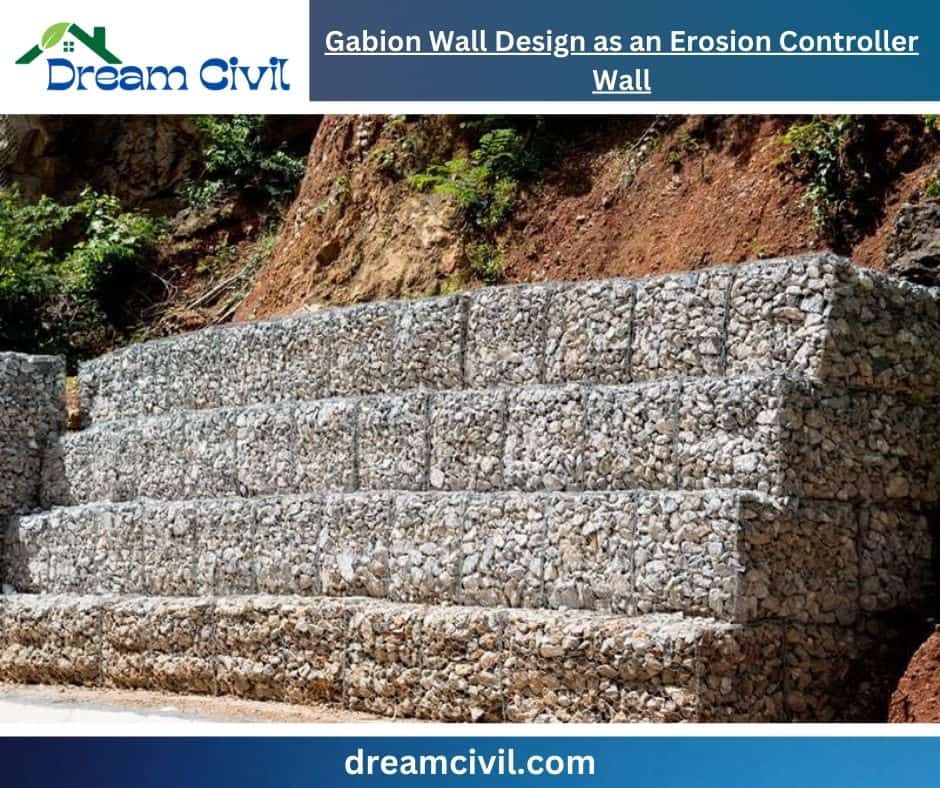
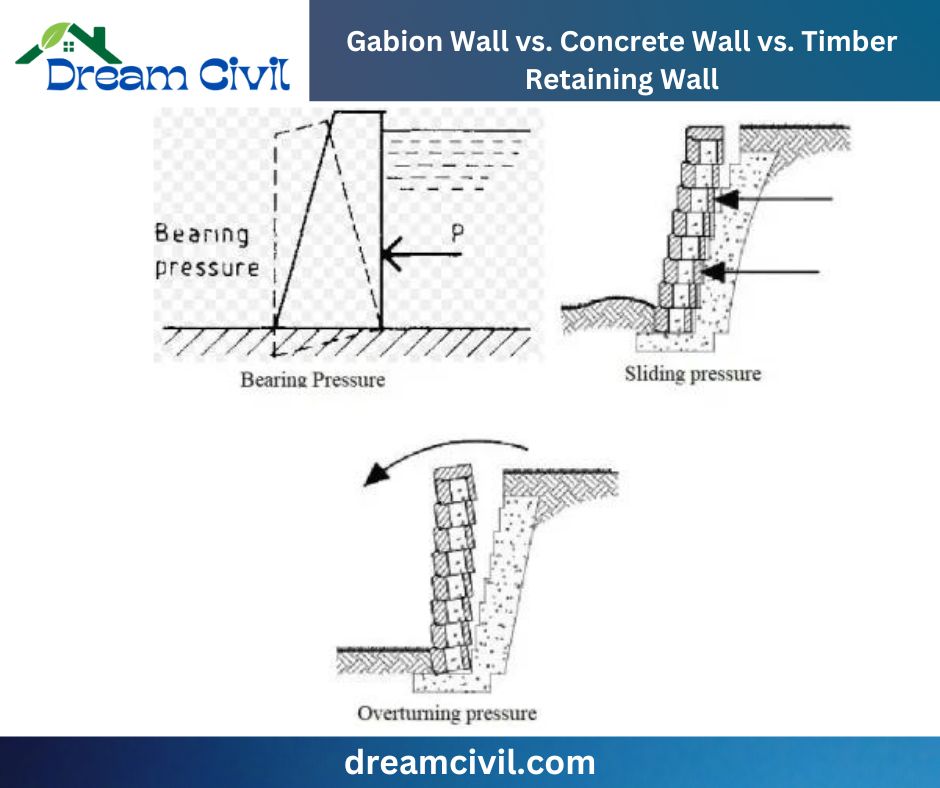
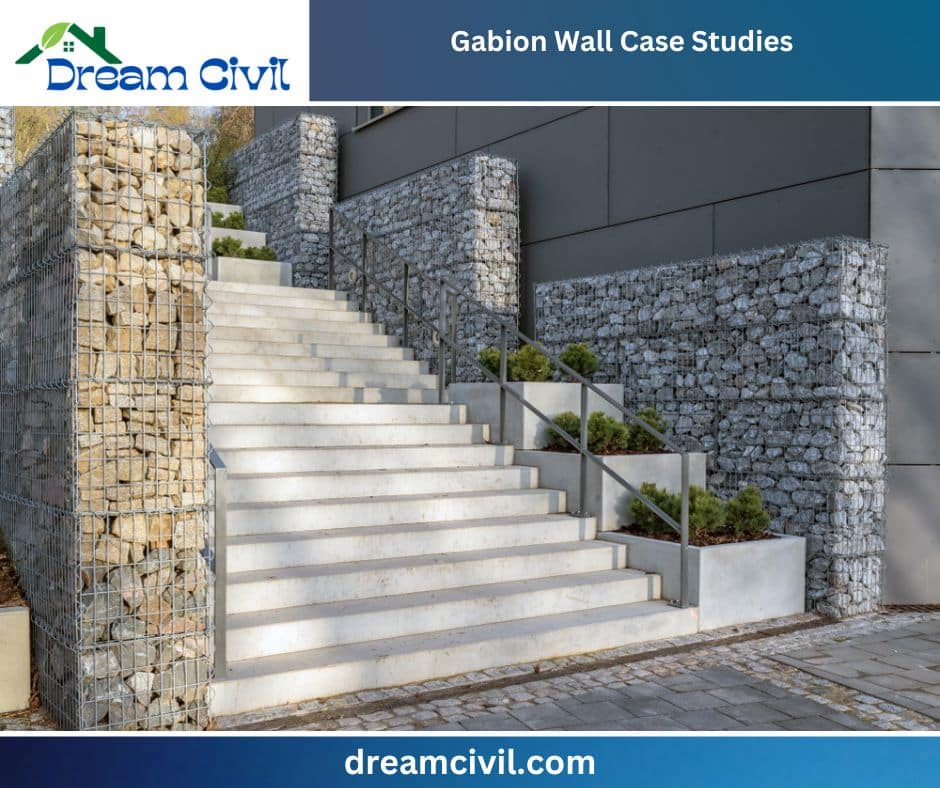
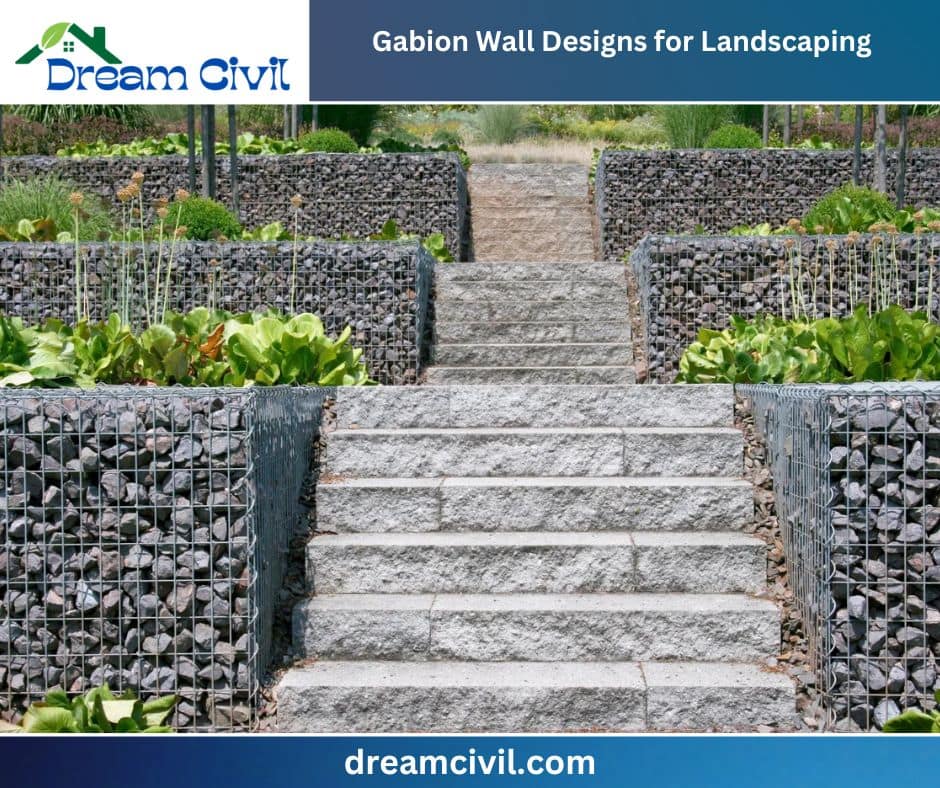
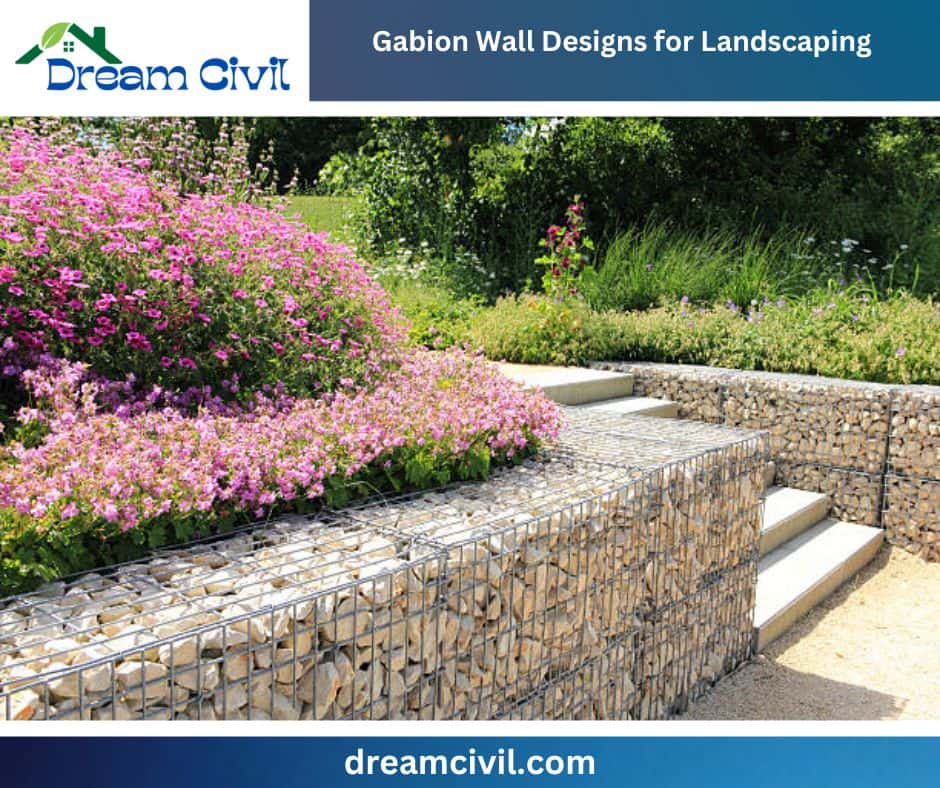
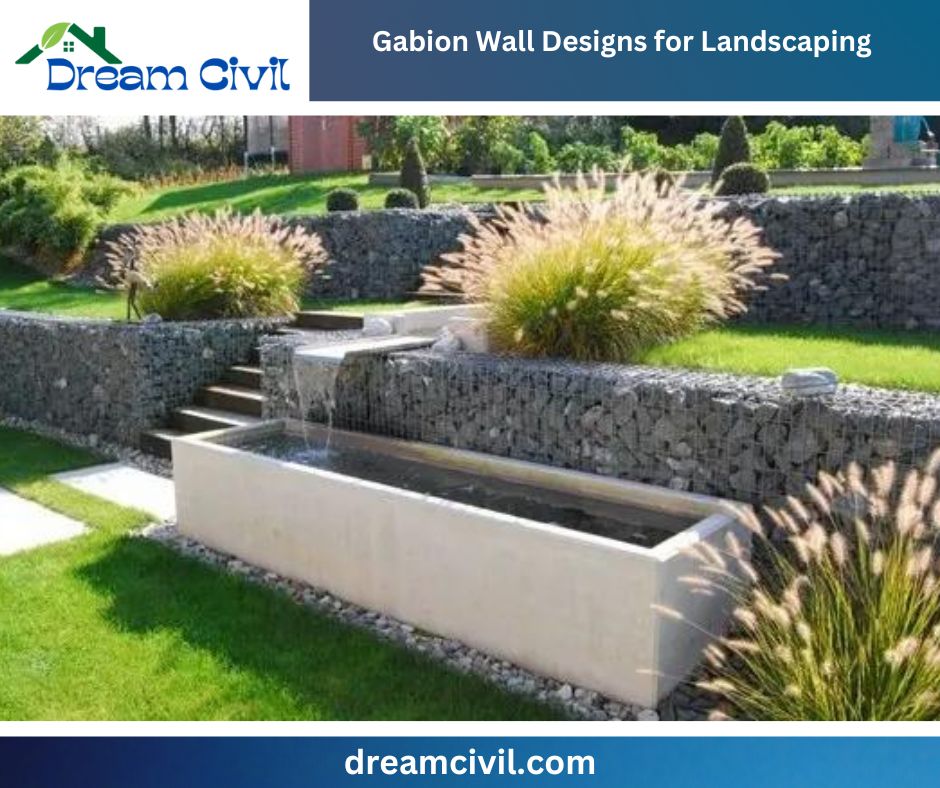
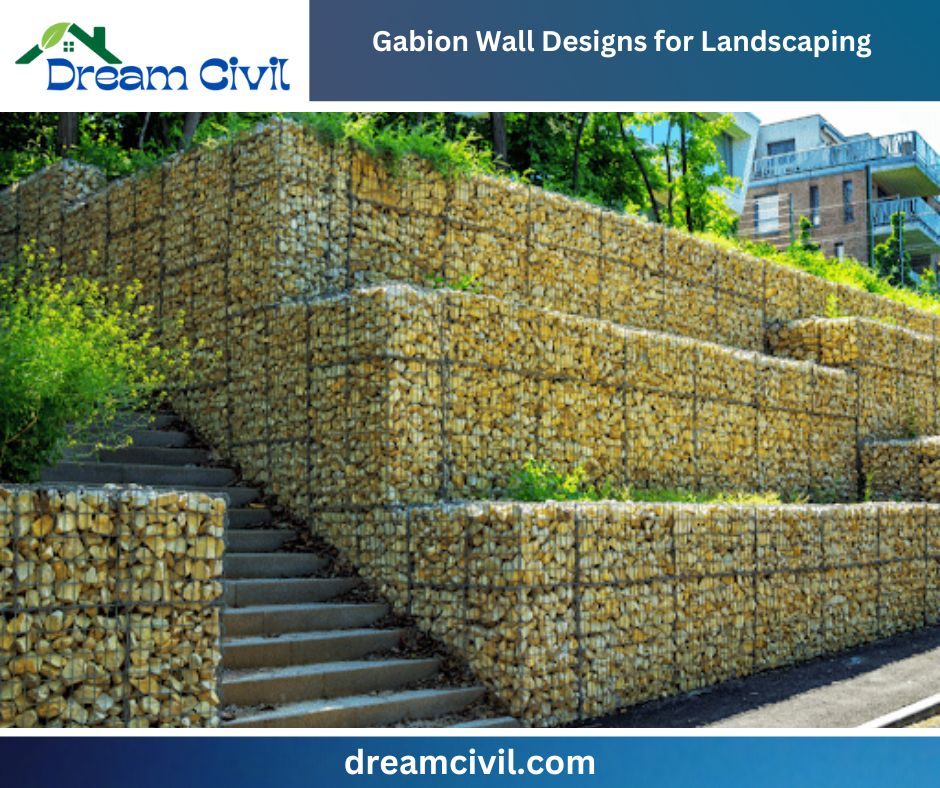
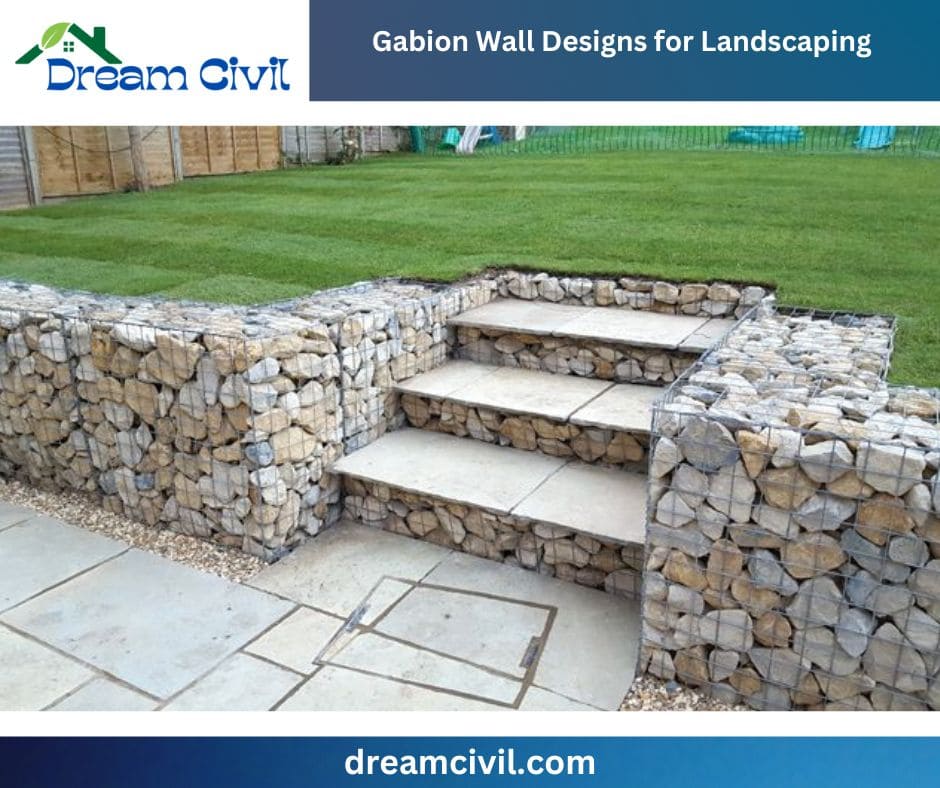
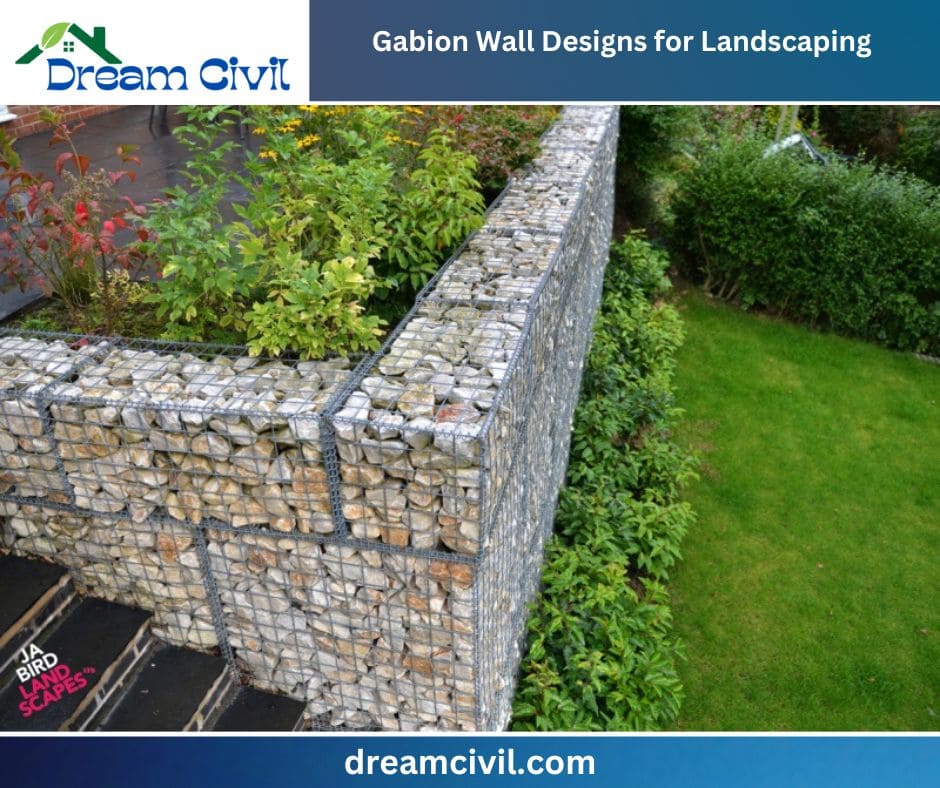
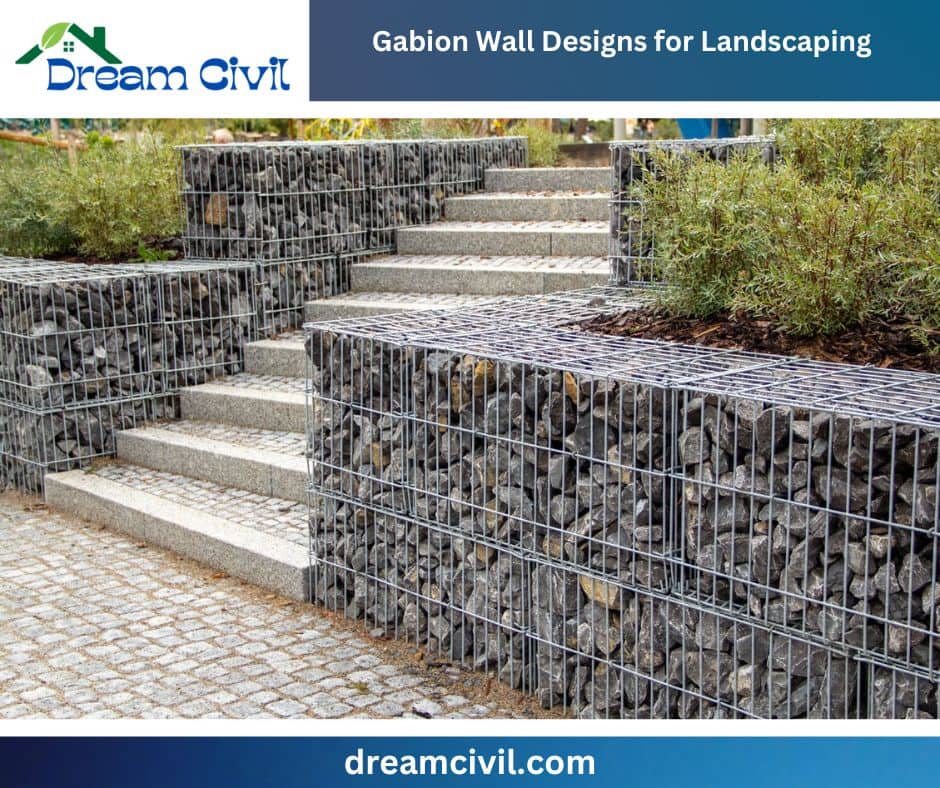
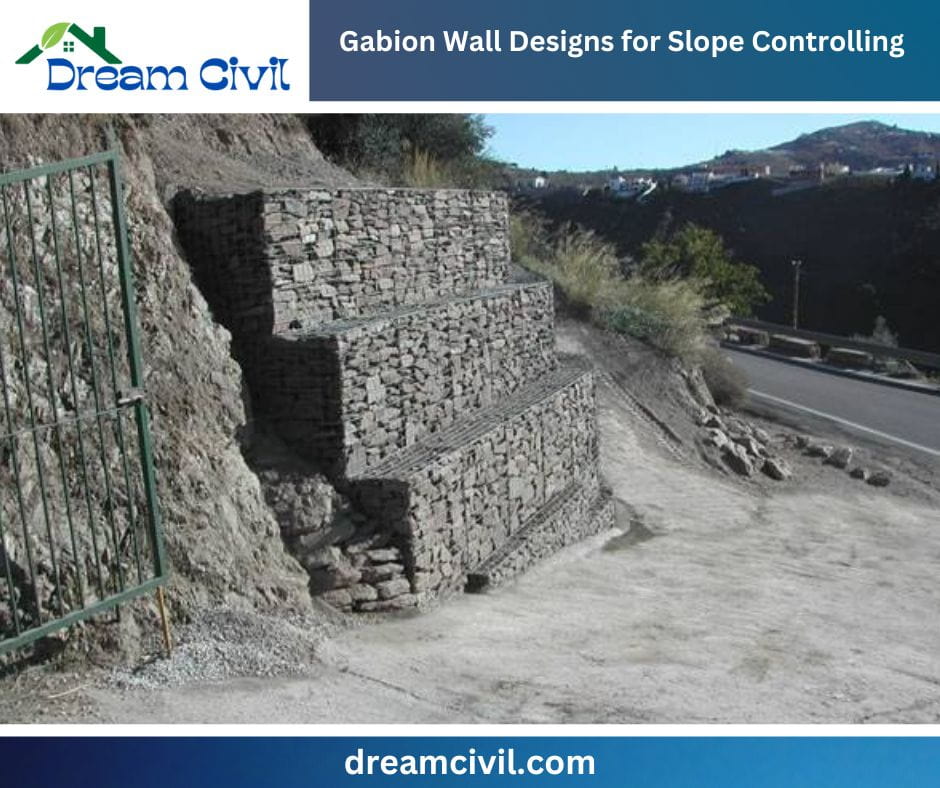
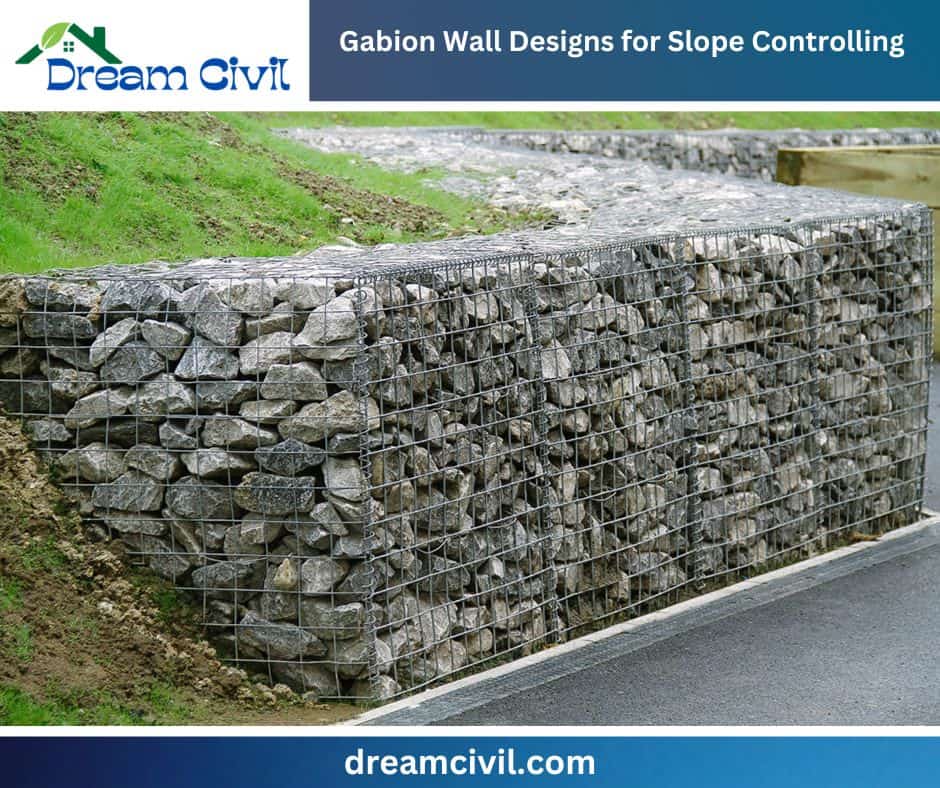
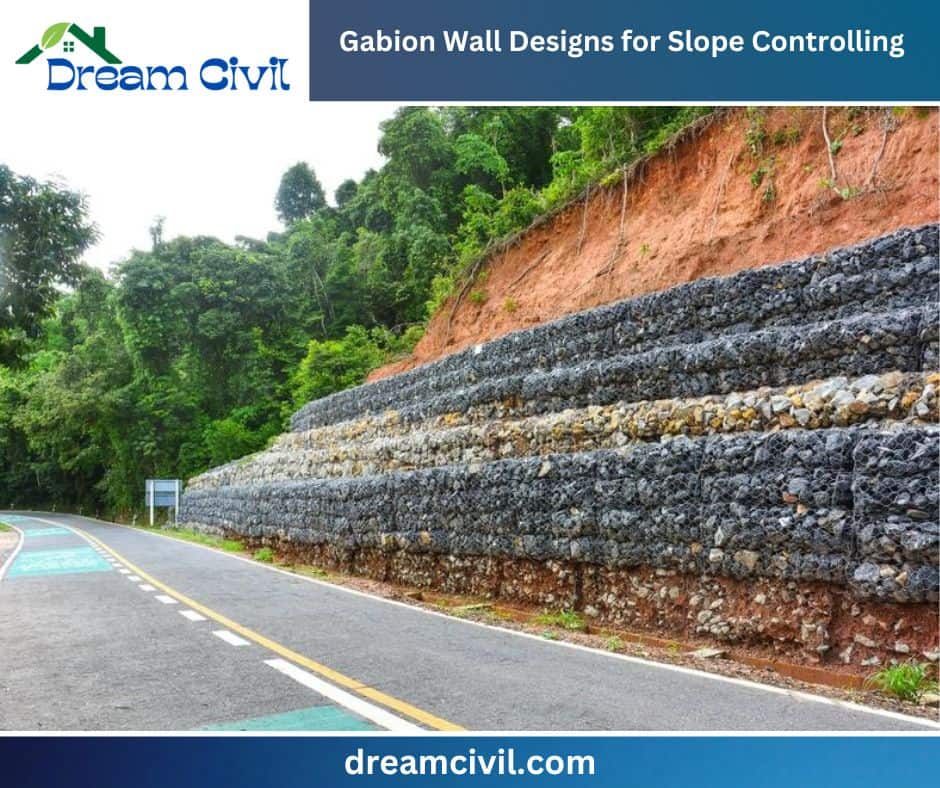
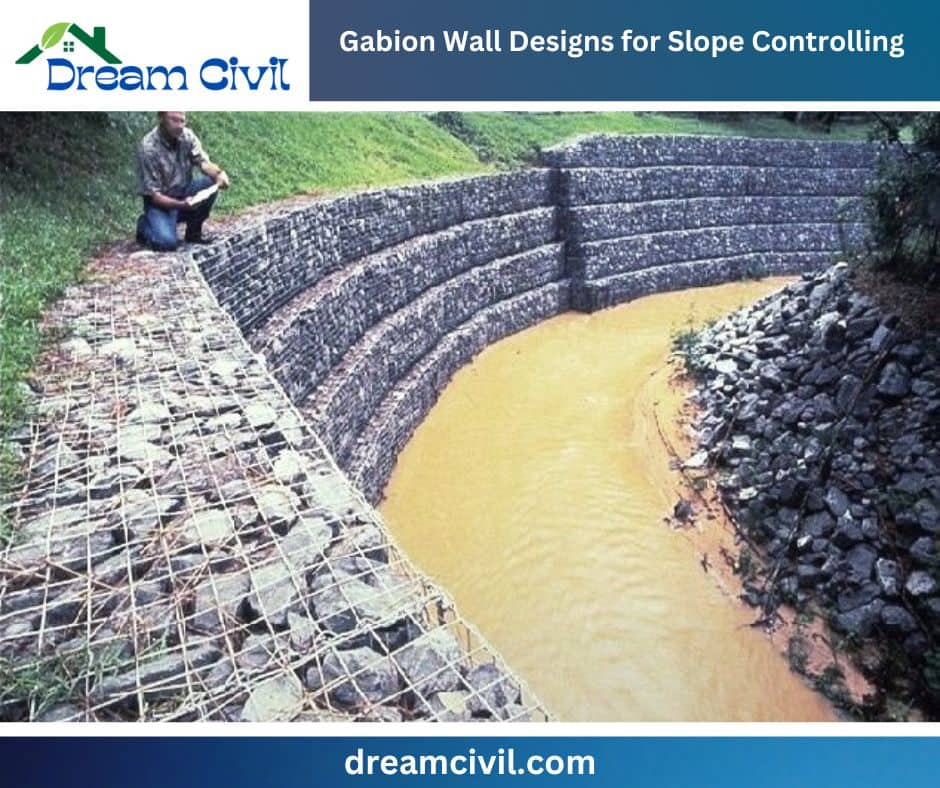
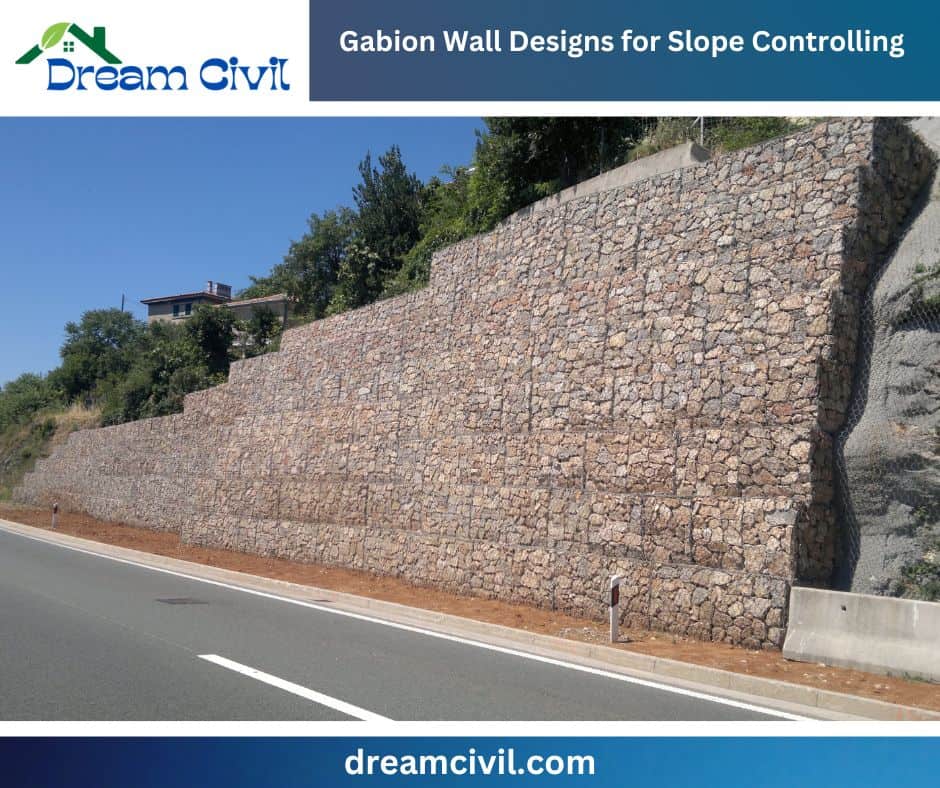

This post provides such a comprehensive overview of gabion walls—great job! I really appreciate how you highlighted the various design options and the benefits of using gabion walls, especially for their durability and aesthetic appeal. The mix of natural stone and wire mesh creates a unique, rustic look that can be quite striking in landscapes, and I can see how they work well for both functional and decorative purposes.
One thing that caught my attention was the mention of how gabion walls can be integrated with other materials like stucco for a more finished appearance. I’m curious—have you seen any specific design trends where gabion walls are combined with stucco on the exterior for added texture and visual interest? How do the maintenance and durability of stucco compare when it’s used alongside gabion construction?